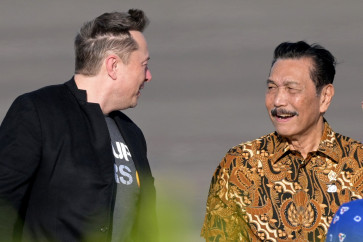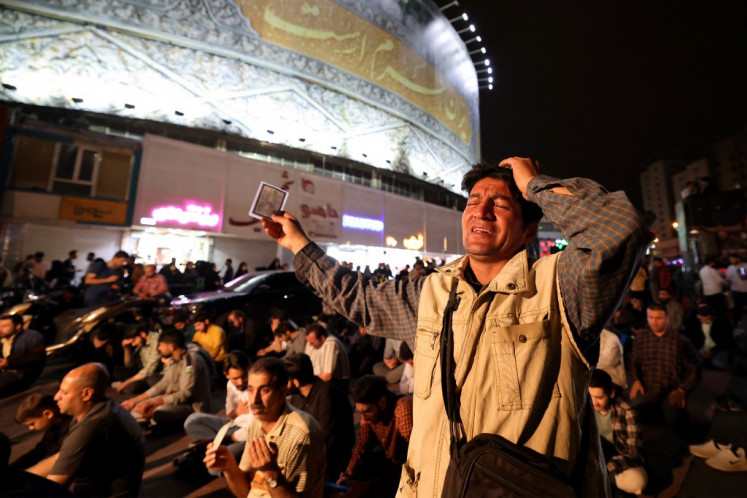US decline: Is it for real?
When historian Paul Kennedy wrote his book, The Rise and Fall of the Great Powers… in the 1980s, his main argument was that the fall of great powers in the past could be attributed to a mismatch between their ambitions and resources
Change Size

W
hen historian Paul Kennedy wrote his book, The Rise and Fall of the Great Powers… in the 1980s, his main argument was that the fall of great powers in the past could be attributed to a mismatch between their ambitions and resources. And when ambitions overtake resources causing military and economic overstretch, the decline and fall of empires is the logical result.
It is an impeccable argument and is proven by the examples of old empires. And the United States is not immune to this, and is likely to succumb to it.
Though Kennedy was right in predicting these long-term trends about the US, his timing was wrong. Just around this time the Soviet Union was crumbling and finally collapsed in 1991. And the US claimed credit for it, having won the Cold War.
The United States emerged as the world’s only superpower. And Francis Fukuyama, an American author, declared the victory of the liberal capitalist model with the US as its nerve center. It was the “end of history”, he declared.
While the US was in a mode of self-congratulation, Paul Kennedy was correctly identifying the trends of an already overstretched United States. The US is in all sorts of difficulties — economically, politically and militarily.
Economically, it is deep in debt — nearing 100 percent of its GDP. It runs an annual trade deficit of US$500 billion. Countries like China, Japan and others, are financing its profligacy by buying its bonds and treasury notes.
Its Federal Reserve is doing its bit by printing more money and keeping interest rates at near zero level to stimulate the economy.
But nothing seems to be working. As a result, unemployment is static at about 9 percent, which is 14 million without work. And if one takes into account those who are underemployed or have stopped looking for work, the total number might be edging toward 20 million.
Imagine the potential for social strife and unrest if the economy doesn’t pick up. Some idea of this can be gleaned from swelling protests against Wall Street and other conglomerates in different parts of the country.
The main problem is that the United States is looking for solutions within the old and familiar system of unlimited economic growth based on limitless consumption. This pattern had indeed become outdated some time ago when a parallel economy of financial instruments, not backed by real money and goods, started trading to create an illusion of ever-growing economy.
But, as the 2008 economic crisis originating in the United States has shown, the old economic pattern of limitless consumption and phony financial instruments has run its course.
First, because people have started to save (if they can) for a rainy day bitten by the continuous stream of bad economic news. Second, with high unemployment there is not much to spend except on necessities. Third, since the banks and other credit institutions are themselves in trouble with their debt problems; they have tightened their credit lines. Last, the systemic failure has created a crisis of confidence all around.
The global economic system, with the United States as its nerve center, has become too big and unmanageable. One sees this at the increasing number of international economic gatherings unable to find effective solutions to the world’s endemic problems. The system simply is not working.
Politically, the recent gridlock between the competing political forces over the question of raising the country’s debt ceiling is symptomatic of the malaise afflicting the United States. President Obama’s election was a breath of fresh air as he promised to change things radically to lift the country’s sagging fortunes. He wanted to create a national consensus on important issues facing the country.
But his political opponents weren’t keen on becoming part of his bandwagon lest he become politically entrenched and thwart their political ambitions. The result is a deeply divided and fractious political elite gnawing at each other. And with presidential elections looming ahead, Obama has lost his shine and looks like any other politician fighting the same old battles.
Militarily, the US is a diminished force bogged down in a 10-year-old war in Afghanistan with no satisfactory conclusion. The wars in Afghanistan and Iraq have shown that despite its massive military power, the US is not invincible even against ill equipped and rag-tag terrorist groups. Now, with economic difficulties overwhelming the country, there is need for pruning the military machine.
Over the next 10 years, the cuts of anywhere between $500 billion to $1 trillion will need to be made in the United States’ defense budget which now stands at $720 billion, up from $432 billion in 2001 (the year of the war in Afghanistan), an increase of 67 percent.
These cuts in defense budget will obviously be reflected in cost cutting in all branches of its armed forces, and the defense establishment is crying wolf that it will adversely affect the country’s global position.
According to Mike Mullen, the chairman of the Joint Chiefs of Staff (just retired), “Our global commitments have not shrunk. If anything, they continue to grow, and the world is a lot less predictable now than we could have ever imagined … Cuts can reasonably only go so far without hollowing the force.”
All in all, the US is not the superpower it was a decade or more ago. But it is still the most powerful country and will remain so for quite some period. Despite its myriad economic problems, the world still has faith in its destiny.
Otherwise, China, Japan and many other countries wouldn’t be lending it money at one of the lowest interest rates of 2 to 3 percent on its bonds. Similarly, the US dollar remains the safest bet (apart from gold, perhaps) in these volatile times.
Indeed, whenever the world markets go through one of their steep falls (which is now frequent), the global investors rush to buy US dollars as safe haven.
Whether or not the US economic fundamentals are sound or not, the world seems prepared to bet on the United States.
Militarily, the US is still the most powerful country in the world. Its defense spending is the largest of any country in the world, and will remain so many years to come even after the cuts in its defense budget over next 10 years.
These cuts are expected to trim some fat from its otherwise bloated military establishment, which might not be a bad thing for the United States and even the world. It might put some restraint on its tendency to fish in troubled waters everywhere.
There is no denying the fact like all past imperial powers, with overstretched commitments; the US is also on a downward trajectory. But it is important to remember that like all fading empires the United States will be playing an important global role for quite a few decades.
The author is a freelance writer based in Sydney.









